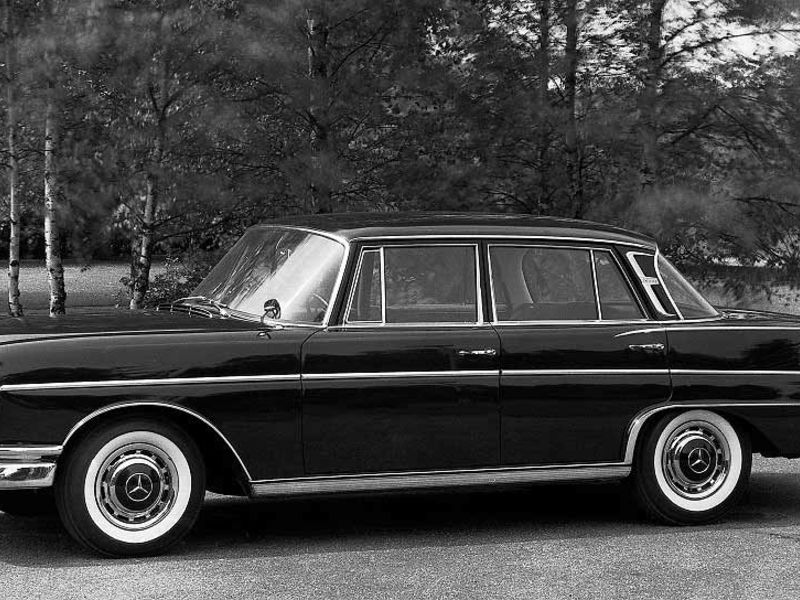
Daimler introduces the six-cylinder 220, 220 S and 220 SE tail fin models — billed as the world’s first series-production vehicles with advanced safety features and bodies — to the press Aug. 11, 1959.
The midsize cars were replacements for the “ponton” sedans that Mercedes-Benz sold through the 1950s.
The most distinctive styling features of the new Italian-influenced models were the tail fins — a blatant concession to American influence on automotive design at the time. Today, the entire model generation is referred to as the “fintails.”
Four-cylinder models featured single, round headlamps and subtle chrome trim, while the high-end six-cylinder cars were equipped with stacked, quad headlamps, a longer hood and more opulent trim.
A coupe version of the 220 SE arrived in February 1961, and a convertible followed that September.
The car’s safety cage — a first for a mass-produced car — was developed by Hungarian-Austrian engineer Bela Barenyi.
The engines and front suspension was mounted on a detachable subframe for added safety.
The cars featured integral crumple zones as well as interiors designed to minimize the risk of injury in an accident: a padded dashboard that yielded on impact; a padded steering wheel with a large impact plate; exterior mirrors designed to break away on contact; padded window sills, door pillars, sun visors and ashtrays; backrests securely attached to the front seats; and yielding door-pull handles and grab handles.
“The 220 SE has outstanding road manners, undoubtedly allied to the firm’s long experience in racing. In addition, it permits the achievement of high and sustained cruising speeds with very good economy,” Autocar wrote Nov. 6, 1959, after reviewing the 220 SE. “The interior is planned to carry five people and their luggage over long distances, in a manner matched by few other cars, irrespective of their country of origin.”